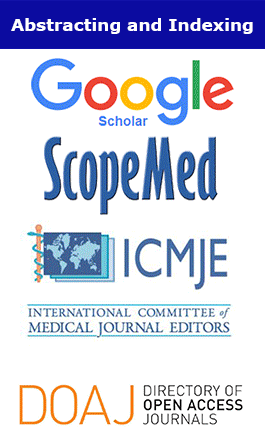Maternal anemia during pregnancy in Bahirdar Town, Northwestern Ethiopia: A facility-based retrospective study
Mulugeta Melku and Aster Agmas
Abstract
Background: Anemia during pregnancy is a major public health problem in developing and developed countries. It has been implicated with an increased risk of maternal and fatal morbidity and mortality. Hence, the main objective of this study was to assess the magnitude of maternal anemia during pregnancy at last antenatal care (ANC) visit at Bahirdar Felege-Hiwot referral hospital ANC clinic. Methods: An institutionalbased retrospective study was conducted in Bahirdar Felege-Hiwot Referral hospital from September 2012 to August 2013. Data were collected from clinical recording charts using data extraction sheet. Both bivariate and multivariate analyses were done to see the association of independent variables with the outcome variable. Results: The mean gestational age was 31 weeks (range: 8-43). Of total 1120 pregnant women, 508 (45.4%) of them were anemic. The mean Hemoglobin level of pregnant women was 10.98g/dL (±1.68 standard deviation). Majority (50.4%) of these anemic women were mildly anemic. The remaining 46.5% and 3.1% were moderately and severely anemic. Immunodeficiency virus (HIV) infection was significantly associated with maternal anemia (adjusted odds ratio [95% confidence interval] = 4.78 [3.14, 7.29]). Concussion: The prevalence of anemia was high, and it is a severe public health problem. Mild type anemia was dominant. HIV infection was associated with maternal anemia. Hence, efforts should be made for early diagnosis and management of anemia and HIV.



